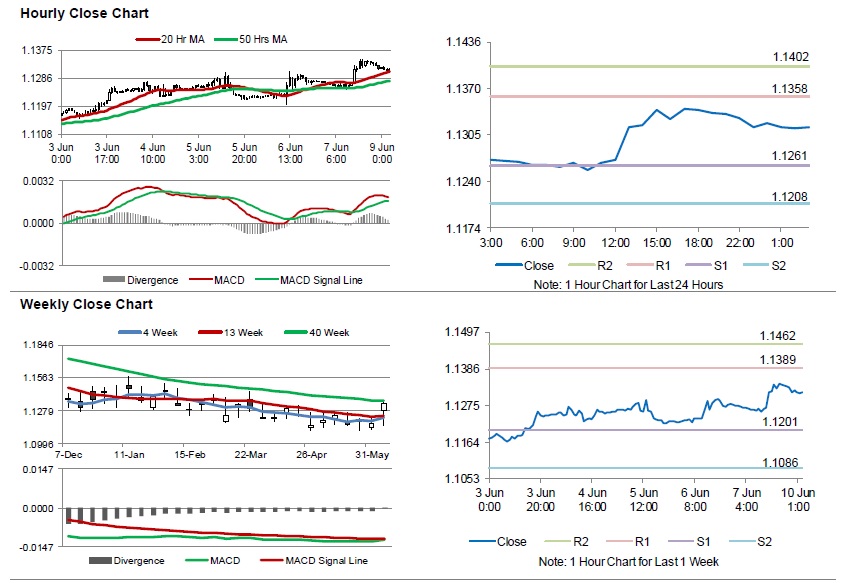For the 24 hours to 23:00 GMT, the EUR rose 0.50% against the USD and closed at 1.1334 on Friday.
On the data front, Germany’s seasonally adjusted trade surplus narrowed to €17.0 billion in April, undershooting market consensus for a surplus of €19.5 billion. The nation had posted a surplus of €20.0 billion in the previous month. Further, the nation’s seasonally adjusted industrial production declined by the most in 4 years by 1.9% on a monthly basis in April, surpassing market expectations for a drop of 0.5%. In the preceding month, industrial production had registered a rise of 0.5% in the prior month.
The US dollar declined against its major peers on Friday, following weaker than expected US jobs data.
In the US, data showed that non-farm payrolls advanced by 75.0K in May, less than market expectations for a rise of 175.0K and compared to a revised advance of 224.0K in the previous month. Moreover, the nation’s average hourly earnings of all employees climbed 0.2% on a monthly basis in May, compared to a similar rise in the prior month. Market participants had anticipated average hourly earnings of all employees to register an advance of 0.3%. Meanwhile, the US unemployment rate remained unchanged at a near 50-year low rate of 3.6% in May, meeting market expectations.
In the Asian session, at GMT0300, the pair is trading at 1.1315, with the EUR trading 0.17% lower against the USD from Friday’s close.
The pair is expected to find support at 1.1261, and a fall through could take it to the next support level of 1.1208. The pair is expected to find its first resistance at 1.1358, and a rise through could take it to the next resistance level of 1.1402.
Amin lack of macroeconomic releases in the Euro-zone today, traders would keep an eye on the US JOLTS job openings for April, slated to release later in the day.
The currency pair is showing convergence with its 20 Hr moving average and trading above its 50 Hr moving average.

